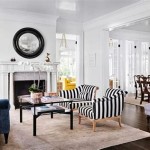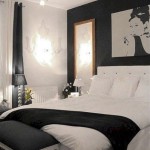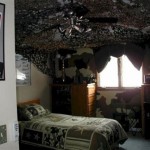How To Decorate A Living Room With A Blue Sofa Table
A blue sofa table can serve as a captivating focal point in a living room. Its color, whether a deep navy or a soft pastel, can significantly influence the overall aesthetic and mood of the space. Integrating this piece of furniture effectively requires careful consideration of complementary colors, textures, and surrounding décor. This article explores the various aspects of decorating a living room with a blue sofa table, providing guidance to achieve a harmonious and stylish environment.
The foundation of any well-decorated living room is a cohesive color palette. Before incorporating a blue sofa table, it is essential to analyze the existing colors in the room, including wall paint, flooring, and other furniture pieces. Understanding the undertones of blue, whether warm or cool, will assist in selecting the most suitable accompanying colors. A cool blue might pair well with grays, whites, and silvers, while a warmer blue might complement browns, golds, and creams. Consider the impact of natural light on the chosen colors; natural light tends to enhance cool tones, while artificial light can make warm tones appear more vibrant.
Furthermore, the size and style of the blue sofa table itself should be considered. A small, minimalist table will have a different impact than a large, ornate one. Smaller tables may benefit from bolder accent pieces, while larger tables can stand alone with simpler decorations. The overall design aesthetic of the room should also be factored in. A modern living room might benefit from a sleek, contemporary blue table, whereas a traditional living room might require a more classic and detailed piece.
Choosing the Right Shade of Blue
The specific shade of blue chosen for the sofa table is crucial for creating the desired ambiance. Different shades evoke different feelings and work well with diverse color palettes. Navy blue, for instance, conveys sophistication and depth, making it a suitable choice for more formal living rooms. It pairs effectively with neutral colors like white, beige, and gray, as well as metallic accents like gold and silver. A lighter, pastel blue, on the other hand, evokes a sense of tranquility and airiness, making it ideal for smaller or more casual spaces. It complements soft colors like lavender, mint green, and pale yellow.
Teal, a blend of blue and green, offers a vibrant and energetic feel, working well in eclectic or bohemian living rooms. It can be paired with earthy tones like terracotta, ochre, and deep brown. Additionally, consider the saturation of the blue shade; a highly saturated blue will be more visually striking while a desaturated blue will be more subtle and understated. Choosing the right saturation level ensures that the sofa table complements the existing décor without overpowering it.
To ensure color harmony, create a mood board or digital rendering of the living room with the different blue shades. This allows for a visual comparison of how each shade interacts with the other elements in the room. It also helps identify any potential color clashes or areas that require adjustment. Remember contrast also plays a vital role; pairing a dark blue sofa table with light-colored walls and accessories can create a striking visual impact, while pairing it with similar colors can create a more subtle and cohesive look.
Selecting Complementary Furniture and Accessories
Once the shade of blue has been chosen, the next step is to select complementary furniture and accessories. This involves considering the style, color, and texture of the surrounding items to create a balanced and aesthetically pleasing living room. Start by selecting furniture pieces that either match or complement the blue sofa table. If the table is a bold statement piece, consider pairing it with neutral-colored sofas and chairs. Conversely, if the table is more subtle, consider adding pops of color with accent pillows, throws, or artwork.
Texture plays a crucial role in adding depth and interest to the living room. Incorporate a variety of textures to prevent the space from feeling monotonous. For example, a blue velvet sofa table could be paired with a woven rug, linen curtains, and knitted throw pillows. This combination of textures creates a tactile and visually engaging environment. Consider materials like wood, metal, glass, and natural fibers to add further dimension to the room.
Accessories such as lamps, vases, and artwork can be used to further enhance the overall aesthetic. Choose accessories that complement the color palette and style of the room. Metallic accents, such as gold or silver picture frames, can add a touch of glamour and sophistication. Plants and flowers can add a natural and refreshing element to the space. When selecting artwork, consider pieces that feature complementary colors or that incorporate different shades of blue. The key is to create a balanced and cohesive look that reflects personal style and preferences.
Arranging Decorations on and Around the Sofa Table
The way decorations are arranged on and around the blue sofa table can significantly affect the overall appearance of the living room. Consider the principles of design, such as balance, symmetry, and proportion, when arranging these items. A well-arranged sofa table can serve as a focal point, drawing the eye and creating a sense of visual interest.
When arranging items on the sofa table, start with a foundation piece, such as a stack of books or a decorative tray. This provides a base for other items and helps to create a sense of organization. Add height with items like lamps, vases, or sculptures. Vary the heights of the items to create visual interest and prevent the arrangement from feeling flat. Consider the rule of thirds, which suggests that an arrangement is more visually appealing when it is divided into thirds, both horizontally and vertically.
Incorporate personal items that reflect your interests and personality, such as family photos, travel souvenirs, or handmade crafts. These items add character and warmth to the living room, making it feel more inviting and personal. Avoid cluttering the sofa table with too many items, as this can make the space feel overwhelming and disorganized. Keep the arrangement simple and uncluttered, focusing on a few key pieces that complement the overall aesthetic.
The space around the sofa table is just as important as the table itself. Consider adding a rug underneath the table to define the space and anchor it within the room. Place a lamp beside the table to provide task lighting and create a cozy ambiance. Hang artwork above the table to further enhance the focal point. By carefully considering the arrangement of decorations on and around the sofa table, it is possible to create a living room that is both stylish and functional.
Lighting is a critical component in showcasing a blue sofa table effectively. Natural light, if available, should be maximized to highlight the color and texture of the furniture. If natural light is limited, artificial lighting can be used to compensate. Lamps with warm-toned bulbs can add a cozy and inviting ambiance, while lamps with cool-toned bulbs can enhance the vibrancy of the blue. Strategic placement of lamps can also create shadows and highlights, adding depth and dimension to the space. Consider using dimmer switches to adjust the lighting levels according to the mood and time of day.
The style of the lighting fixtures should also complement the overall design aesthetic of the living room. Modern living rooms might benefit from sleek, minimalist lamps, while traditional living rooms might require more ornate and decorative fixtures. Chandeliers can add a touch of glamour and sophistication to the space, while sconces can provide ambient lighting and highlight specific areas of the room. By carefully considering the type and placement of lighting, it is possible to create a living room that is both functional and visually appealing.
Ultimately, decorating a living room with a blue sofa table is a process that requires careful planning and attention to detail. By considering the factors outlined above, including color palette, furniture selection, accessory arrangement, and lighting, it is possible to create a living room that is both stylish and inviting. Remember that personal preferences and individual style should always be the guiding force behind any decorating decisions. The goal is to create a space that reflects personal taste and provides a comfortable and enjoyable environment for relaxation and entertainment.

Living Room Decor Ideas Around Your Blue Sofa Swyft

How To Decorate With A Blue Sofa Interior Design Advice

30 Living Rooms With Stylish Blue Couches Couch Room Sofas Decor

Stylish Blue And Gold Living Room Decor

10 Décor Ideas To Go With An On Trend Blue Velvet Sofa Houzz Ie

Blue Sofas With Brown Wicker Coffee Table Transitional Living Room

Modern Living Room With Wicker Furniture And Blue Sofas

68 Navy Blue Living Room Ideas

Blue Chesterfield Sofa Design Ideas

25 Best Blue Rooms Decorating Ideas For Walls And Home Decor
Related Posts







